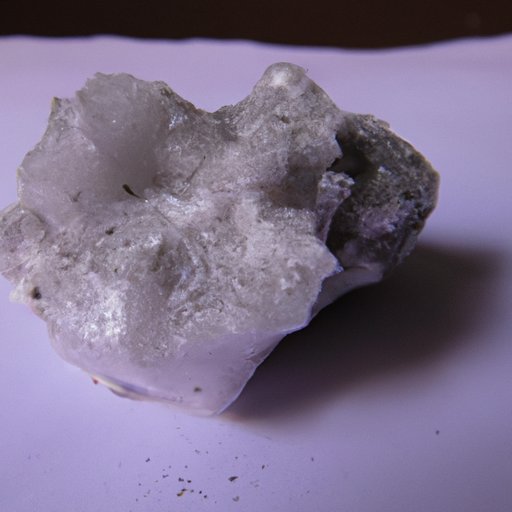Introduction
Silicate minerals are some of the most abundant minerals on Earth and make up much of the planet’s crust. These minerals have been around for billions of years and are essential components of many rocks and soils. This article will provide an overview of what silicate minerals are, their formation, different types, and how they are used in everyday life.
What are Silicate Minerals?
Silicate minerals are a group of minerals composed mainly of silicon and oxygen, with additional elements such as aluminum, iron, and magnesium. They are found in all types of rock, from sedimentary to igneous and metamorphic. Silicates can form in many different shapes and sizes and have a wide variety of uses in industry, construction, and decoration.

The Chemistry Behind Silicate Minerals
Silicate minerals are formed when silicon and oxygen atoms bond together in a crystalline structure. Other elements, such as aluminum, iron, and magnesium, may be added to create various types of silicate minerals. The combination of these elements forms a chemical compound known as a silicate. Silicates are divided into two main groups: tectosilicates and non-tectosilicates.

Exploring the Different Forms of Silicate Minerals
Common silicates include quartz, feldspar, mica, olivine, and amphibole. Quartz is one of the most abundant minerals on Earth and is used in many industries, including jewelry making and electronics. Feldspar and mica are also common minerals that are used in a variety of applications, such as glass production and ceramics. Olivine and amphibole are more rare silicates, but they are still used in certain industrial applications.

How Silicate Minerals are Used in Everyday Life
Silicate minerals are among the most important materials used in industry and construction. They are used in the production of glass, bricks, tiles, and concrete. In addition, silicates are also used in the manufacture of ceramics, paints, and plastics. Silicates are also widely used as decoration in buildings and homes. Quartzite, granite, and sandstone are popular choices for floors, countertops, and walls.
A Comprehensive Guide to Silicate Minerals
Identifying silicate minerals can be difficult, as there are so many different types. It is important to note that not all silicates are created equal, and some may contain more or less of certain elements than others. To properly identify a silicate mineral, it is best to consult a professional. Additionally, some silicates can have health benefits, such as reducing inflammation and aiding digestion. However, it is important to consult a doctor before taking any supplements containing silicates.
Conclusion
Silicate minerals are an important part of the Earth’s crust and have a wide range of uses in industry, construction, and decoration. Although identifying silicates can be difficult, they can have a variety of health benefits if taken in moderation. Understanding the chemistry behind silicate minerals and exploring the different types can help us better understand and appreciate these incredible minerals.
(Note: Is this article not meeting your expectations? Do you have knowledge or insights to share? Unlock new opportunities and expand your reach by joining our authors team. Click Registration to join us and share your expertise with our readers.)
